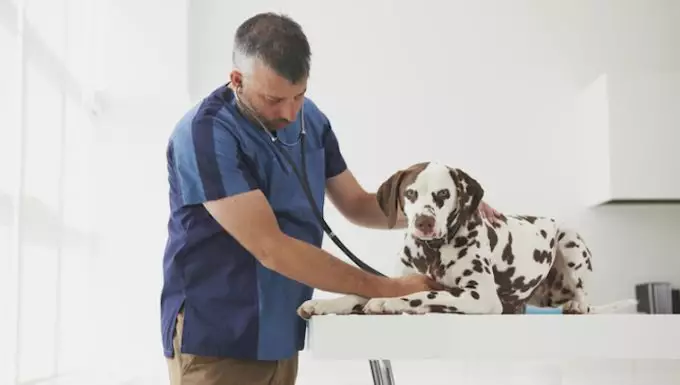Lung cancer, particularly squamous cell carcinoma, poses a significant risk for our canine companions, especially for the larger breeds and older dogs. This condition, while relatively uncommon, demands our urgent attention due to its aggressive nature. For breeds like Labrador Retrievers and German Shepherds, the statistics are particularly alarming, highlighting a need for heightened awareness among pet owners and vets alike. The more we understand this rare but formidable illness, the better equipped we become in safeguarding our furry friends.
Spotting the Signs: Early Detection Is Crucial
Recognizing the symptoms of lung cancer in dogs is paramount for timely intervention. Common indicators include a persistent cough, noticeable breathing difficulties, unexplained weight loss, and unusual appetite changes. More severe symptoms such as coughing up blood and blood in urine or feces signal an advanced stage of the disease that warrants immediate veterinary attention. As vigilant guardians of our pets, it’s crucial to be alert to these changes, as early diagnosis can significantly impact the treatment options available and potentially improve outcomes.
Unraveling the Causes: A Multifactorial Mystery
The causes of lung cancer in dogs are not singular but rather a confluence of factors. Environmental influences, such as exposure to secondhand smoke and various toxins, play a significant role in the development of this cancer. Older dogs and larger breeds appear to be predisposed, raising questions about genetic predispositions and lifestyle factors. This raises an ethical consideration: as pet owners, we bear responsibility for creating a safe environment for our dogs. Limiting exposure to harmful substances may not guarantee immunity, but it is a step in the right direction.
The Diagnostic Journey: Comprehensive Vet Care
When lung cancer is suspected, the diagnostic process is thorough and extensive, revealing the professionalism and dedication of veterinary medicine. The veterinarian not only evaluates the presenting symptoms but also delves into the dog’s medical history, which includes breed-specific predispositions. A comprehensive physical examination, coupled with blood and urine tests, leads to more invasive diagnostic tools like endoscopy and biopsy. These steps are not merely formalities; they are critical in ensuring an accurate diagnosis and tailor-fitting the treatment plan—a testament to the complexity of veterinary care.
Charting the Path Forward: Treatment and Care
Treatment for lung cancer in dogs typically entails surgical intervention to excise cancerous tissues, often complemented by chemotherapy to manage the disease. The recovery process is just as pivotal; it requires a harmonious blend of medical care and environmental adjustments at home. It’s essential to create a soothing environment for the recovering dog, limiting exercise, and closely monitoring their condition under veterinary guidance. The emotional toll of caregiving cannot be understated; the bond between a dog and its owner strengthens profoundly during these trying times.
While navigating the treacherous waters of canine lung cancer can be daunting, it’s imperative that we remain informed and proactive. By recognizing early symptoms, understanding risks, and actively participating in our pets’ healthcare, we nurture a more hopeful future for our beloved companions.

